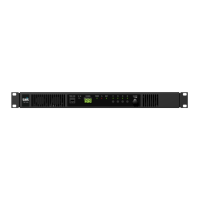20 Functional Description TB7100 Service Manual
© Tait Electronics Limited October 2005
Frequency Bands
and Sub-bands
The circuitry in the base station modules is common to all frequency bands,
and is therefore covered by a single description in this manual. Where the
circuitry differs between bands, separate descriptions are provided for each
frequency band. For more information refer to “Frequency Bands” on
page 11.
RS-232 Signals External data communications all occur directly between the connected
computer (or other electrical equipment) and the transmitter and receiver
modules over the RS-232 serial lines.
Fan Signals The power and ground signals for the fans are routed from the SI board to
the fans behind the front panel. These signals are electrically isolated from
all other system signals to ensure fan noise is not transferred to other sensitive
system components.
If there is a fault in the fan circuitry, the transmitter module is protected from
overheating by its internal foldback circuitry.
Speaker Signal Received audio is sent from the receiver module to the UI board.
The volume is controlled by the volume potentiometer on the UI board.
The audio signal is then passed to the speaker for monitoring purposes.
Power and Ground The SI board provides power to the transmitter and receiver modules.
The receiver modules provides power to the UI board.
3.1 Receiver Operation
Parts of Receiver
Board
The main circuit parts of the receiver modules are:
■ receiver
■ frequency synthesizer
■ CODEC (coder-decoder) and audio circuitry
■ power supply
■ interface circuitry
Software plays a prominent role in the functioning of the radio.
When describing the operation of the radio the software must be included
with the above. This is considered further below.
These functional parts are described in detail below.

